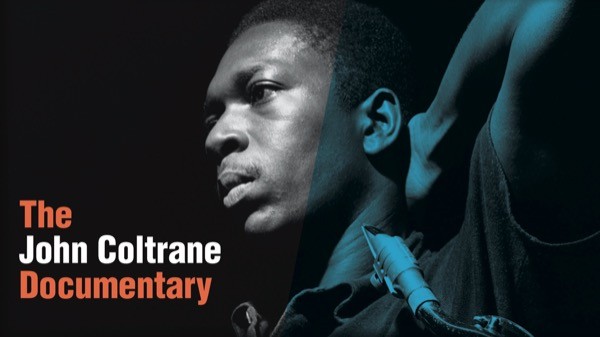
09 Sep Telluride Film Fest, After the Fest: “Chasing Trane” & “Maudie”
On the surface, the protagonists in the two films featured at The Nugget that night have nothing in common beyond the photochemical medium used to tell their stories: one was a painter from a small town who stayed small town; the other was a jazz musician who came to be revered on the world stage But there is always a method behind the Telluride Film Fest’s madness. Both were individuals who faced and overcame major personal challenges, turned lemons into lemonade, and found their Holy Grail: personal and professional success, but most of all, contentment. When it comes to being given gifts, large and small, in the end, it was Christmas everyday on their front porches. One of them, the titan of the duo, has the initials JC.
We missed “Chasing Trane” and “Maudie” over Labor Day weekend, but caught them during the Telluride Film Festival’s After the Fest Fest.

“Chasing Trane” is a fact-packed, colorful (visually and sonically), and deeply affecting tribute to a man fans and critics acknowledge is in a pantheon with Mozart, Bach, Einstein, Picasso: the genius also known as John Coltrane or “Trane,” the American jazz saxophonist and composer who helped pioneer the use of modes in jazz and was later in the forefront of the movement known as free jazz.
In the doc, famous Coltrane admirers praise the late, great musician and thinker’s contributions to American music and humanity as a whole, in a collage of clips from this brand new, authorized documentary, which premiered in Telluride on September 3.
“I just thought, ‘Oh, my God, this guy, his mind and his heart is so there in a place that everybody ought to reach for,’” says President Bill Clinton in one excerpt.
Santana, in one of several eloquent moments, emphasizes the deep spiritual power of Coltrane’s music, likens the saxophonist to “an archangel of the highest order.”
Although John Coltrane never did any television interviews and only a handful for radio, recordings that have ultimately been rendered unusable over time, he is an active and vibrant presence in the film through performance clips and excerpts from print interviews that he gave during his career, his words spoken by Academy Award-winner Denzel Washington.
“In all of his roles Denzel radiates an exceptional quiet strength,” says writer-director John Scheinfeld. “Coltrane, many of his friends told me, embodied a similar strength. That’s why Denzel was my first choice to speak his words and I’m thrilled he made the time to participate in our film.”
Featuring never-before-seen Coltrane family home movies, footage of John Coltrane and band in the studio (discovered in a California garage during the production of this film), along with hundreds of never-before-seen photographs and rare television appearances from around the world, Coltrane’s incredible story is largely told by the musicians who worked with him (Sonny Rollins, McCoy Tyner, Benny Golson, Jimmy Heath, Reggie Workman), musicians that have been inspired by his fearless artistry and creative vision (Common, John Densmore, Wynton Marsalis, Carlos Santana, Wayne Shorter, Kamasi Washington), Coltrane’s children and biographers, and by well-known admirers such as, again, President Clinton and philosopher Dr. Cornel West.
“Chasing Trane” reveals the critical events, passions, experiences, and challenges that shaped the life of John Coltrane and his revolutionary sound. It is a story of demons and darkness, of persistence and redemption. Above all else, it is the incredible spiritual journey of a man who found himself and, in the process, created an extraordinary body of work that transcends all barriers of geography, race, religion, and age.
Born September 23, 1926 in Hamlet, North Carolina, John Coltrane’s first introduction to music came through his musician father. Growing up, Coltrane was obsessed with the records of Count Basie and Lester Young.
At the age of 13, Trane picked up the saxophone and tried to imitate the sounds of his then idols Charlie Parker and Johnny Hodges. Thus began the career of one of the 20th-century’s most important and influential artists.
Coltrane’s dramatic life story was cinematic in its scope, from his early musical life playing alongside giants such as Dizzy Gillespie, to breakout performances with the Miles Davis Quintet on the classic recordings ‘Round About Midnight and Kind of Blue, to a historic association with Thelonious Monk and then finally to his astonishing solo career that gave the world such masterworks as Giant Steps, My Favorite Things, Impressions, Live at Birdland and 1965’s seminal A Love Supreme.
“Trane” died in 1967 at the age of 40, an enigmatic, dominant figure whose massive influence on generations of artists has grown even stronger in the decades since.
Maud Lewis died in 1970, age 67, in Digby, Canada, an open book with a happy ending.

Directed by Aisling Walsh and starring a warmly persuasive Sally Hawkins (“Happy Go Lucky” and “Blue Jasmine”) as Maud and Ethan Hawke as her iconoclastic husband Everett Lewis,
“Maudie” is based on the true story of Nova Scotia self-taught artist.
Maud Lewis, who suffered from juvenile rheumatoid arthritis, was a life-long cripple who overcomes family and physical challenges to become a pioneer of the Art Naive school and relatively happily married to a crabby societal misfit who makes a living as fish peddler.
Though Maud Lewis is small of stature and story, certainly relative to Trane or another of Telluride Film Fest 2016 heroes, Captain Sully Sullenberger, make no mistake, the woman was a hero, a prime example of success against the odds, clearly depicted as strong on the inside through Hawkins’ splendid performance.
Dramatically spare and wild Newfoundland locations, surrogates for Nova Scotia, also starred in this small jewel of a film.


Sorry, the comment form is closed at this time.